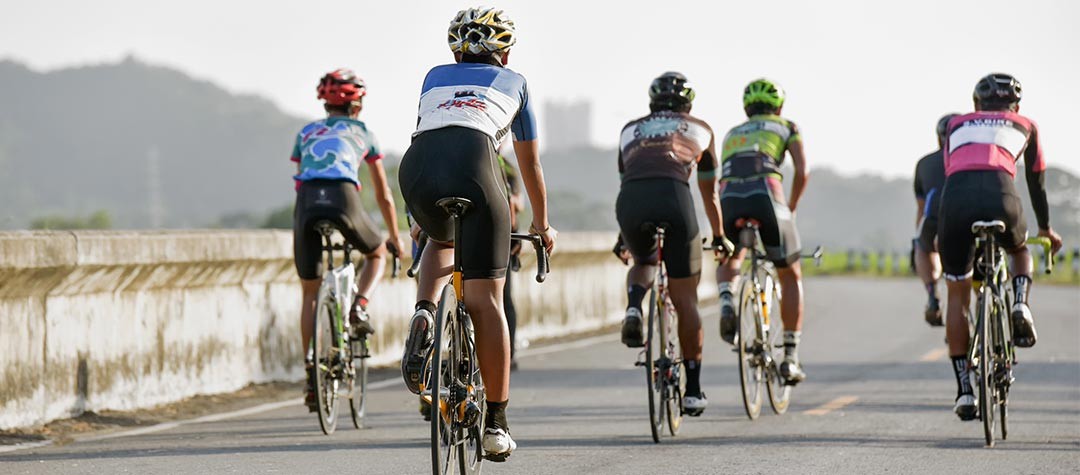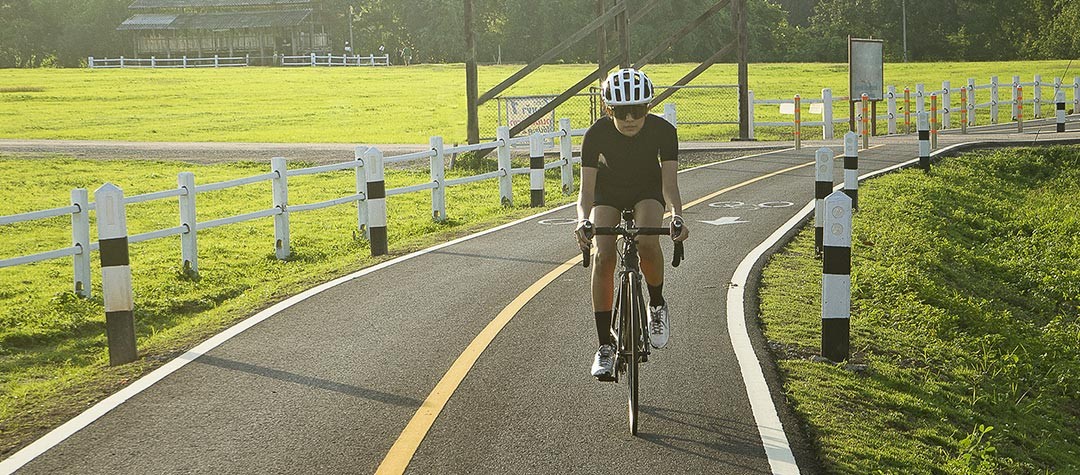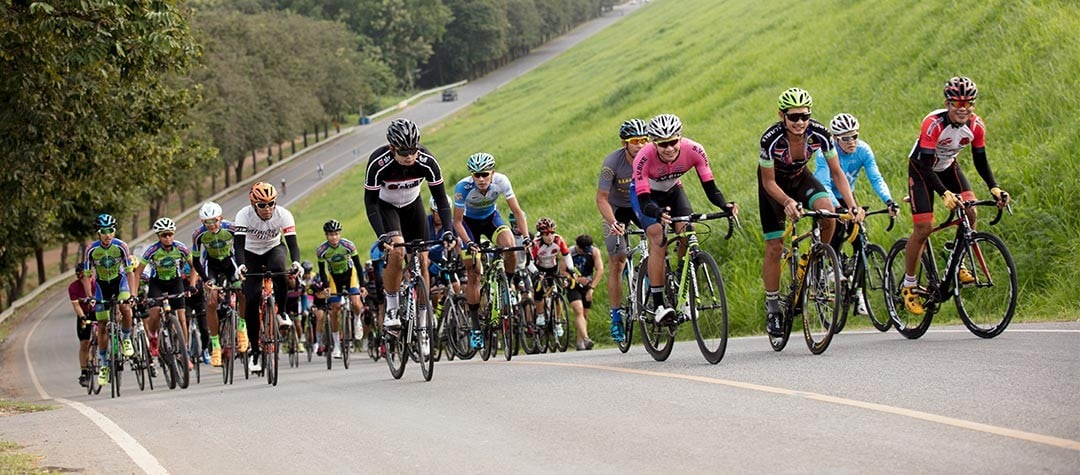There’s more to training for a long distance cycling event than just clocking up the kilometres on the road. Find out how to train effectively for your event.
Long distance cycling requires requires a high level of endurance which cannot be developed in a very short space of time. To prepare properly, especially if you haven’t got any real training base fitness, means that you need to allocate a solid block of time to get in condition for your event.
Event distances can vary widely, with some in excess of 200km, and some events can even be over multiple days. By training properly for your event can make the difference between struggling and really enjoying it. Here are some tips to get you in tip top shape for your long distance cycling event.
Choose distance carefully
One person’s idea of a long distance event may be another person’s daily commute. Think about what distance event you want to do and consider whether you have sufficient time to train for it. If you are new to long distance cycling then a 12-week training block should be the bare minimum, so that you’ve got sufficient time to reach the entire distance during training.
Your bike and bike set up
Before you ramp up your training to any extent, you need to consider whether your bike is suitable for the type of event you are trying to do. A mountain bike or commuter bike might be able to get you comfortably around for a 50km event, but you really would be better off investing in a good road bike . Once you have a suitable road bike, be sure to get along for a bike fit to ensure it is set up correctly for you. While you can get away with poor bike set up when doing short rides, as soon as you start increasing the distance significantly, those small niggles can develop into more serious issues.
Get kitted out properly
While you can can generally start riding in any sport gear you like, the longer the distance you ride the more the flaws in your gear will be exposed. Decent cycle shorts with a quality seat pad will improve your comfort and allow you longer hours on the saddle as you train. Cycle specific clothing, including jersey, jacket (for the wintry weather), gloves, legging, overshoes will all go some way to making you comfortable on a ride and less inclined to cancel when the weather takes a turn for the worse.
Start slowly
As with any sporting discipline, building up slowly is the way to go. Gradual progression will aid injury prevention, so the more time you give yourself to train, the better. For long distance rides (often completed at the weekend) the intensity you will ride at will be generally low, but what you need to do is train the body to work at that intensity for several hours. By making small increases week on week you’ll eventually be at a level where you can ride your target distance.
Join a club
Training alone isn’t much fun and you’re usually safer when riding with a group. By joining a club you’ll make progress far quicker than you imagined. In addition, you’ll pick up tips from other riders, get used to riding in a group, learn how to draft (ride in close proximity to another rider for aerodynamic benefit), and generally just take advantage of the expertise that other riders can offer you.
Try commuting
Particularly if you are limited for time, then you can get some of your rides in by completing them on the way to work and back home again. If commuting to work on your bike is possible then you could try and arrange your work day so you start early and avoid the worst of the traffic, both ways. If the distance to work is too great for commuting there and back, then don’t dismiss the idea - just ride one way and take the train back on the other leg. Riding first thing, before breakfast, can also be a great way or burning fat so you get closer to your ideal riding weight.
Use interval training
Although the ultimate intention of your training is a long ride, don’t neglect interval training. By including 2-3 interval training sessions per week (perhaps on your commute?) will help build your endurance and aerobic capacity. A typical interval session might involve multiple quick bursts of speed (for example, 2 minutes at speed) interspersed with recoveries (2 minutes riding slow.) Maintain this pattern over the course of an hour.
Recovery
One of the most vital ingredients of training is recovery . Don’t spend every spare minute riding as recovery is just as important as the training itself. Riding every day and you’ll very quickly burn yourself out. Allow at least two days where you do no riding whatsoever, or the intensity of your ride is kept to a bare minimum. These recovery days are when the body repairs and adapts to the training you are putting it under.
Nutrition
Good nutrition and hydration are key before, during and after rides. You need to fuel well before a ride to stock up your glycogen levels and then top up these levels by consuming food and drink (mainly carbohydrate) during ride. Try out the array of energy bars, gels and drinks during training so you know what works well for you and helps you avoid "bonking" – that tiredness caused by low blood sugar and/or dehydration. Also, don’t neglect your post-ride fueling when you’ll need to take on carbs and protein to replenish your glycogen levels and also aid muscle recovery.
Core strength
Improving your core strength can greatly aid your riding ability and comfort on a bike. Back pain experienced when riding results often results from a lack of core strength and by improving that you will increase your ability to ride longer distances. Improving your core strength will increase your efficiency on the bike, ensuring a proper transfer of power. In addition, better core strength will lessen your chances of injury.
Resistance training
Resistance training can complement your riding by helping you build muscle endurance and will provide some variety for your training. Areas to concentrate on include the lumbar spine, abdominals, quadriceps, hamstrings and calves. Also, don’t neglect the upper body, as despite the argument that too much upper body bulk will slow you down, some upper body work will help balance you as an athlete.
Hill work
Nobody really likes riding hills but if your ride is of sufficiently long distance then it’s almost inevitable that you’ll hit some hills, so be prepared. Having trained on the hills will make riding on the flat seem almost effortless. Riders who stick the the flat will be in for a shock should their long distance event encompass multiple hill section. If you are limited for time then short hill sessions can sometimes provide you with a greater workout in a shorter time than a longer flat ride.
Stretch and flexibility
Cycling shortens and tightens your muscles so you need to make sure to return them to their pre-ride length by stretching after every training session. Stretching will improve your flexibility and help avoid any post-ride stiffness, as well as lessening your chance of injury. Important areas to stretch include the hamstrings, glutes, hip flexors, lower back, neck and shoulders. Make stretching an area of your training strategy that you absolutely do not skip.
Train through winter
Depending on the timing of you event, it makes sense to train through the winter months in some form or other. If you can't get out on the roads then consider buying a turbo trainer so you can cycle indoors. You could make use of a stationary bike or even spinning sessions in your local gym. Another alternative is to cross train with non-cycling activities to at least maintain your cardiovascular fitness.














